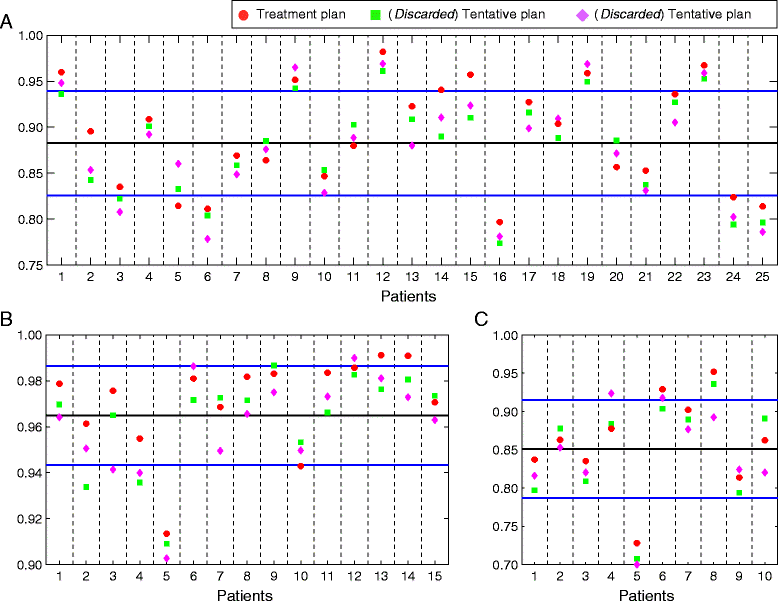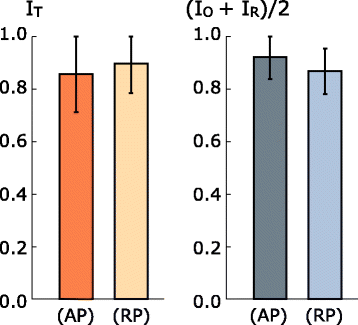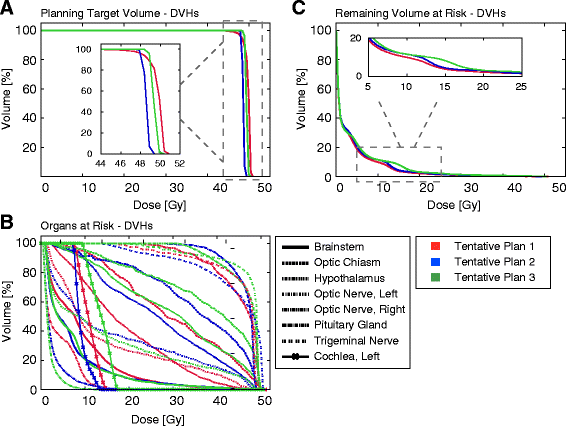A dose-volume histogram based decision-support system for dosimetric comparison of radiotherapy treatment plans
- PMID: 26715096
- PMCID: PMC4696205
- DOI: 10.1186/s13014-015-0569-3
A dose-volume histogram based decision-support system for dosimetric comparison of radiotherapy treatment plans
Abstract
Background: The choice of any radiotherapy treatment plan is usually made after the evaluation of a few preliminary isodose distributions obtained from different beam configurations. Despite considerable advances in planning techniques, such final decision remains a challenging task that would greatly benefit from efficient and reliable assessment tools.
Methods: For any dosimetric plan considered, data on dose-volume histograms supplied by treatment planning systems are used to provide estimates on planning target coverage as well as on sparing of organs at risk and the remaining healthy tissue. These partial metrics are then combined into a dose distribution index (DDI), which provides a unified, easy-to-read score for each competing radiotherapy plan. To assess the performance of the proposed scoring system, DDI figures for fifty brain cancer patients were retrospectively evaluated. Patients were divided in three groups depending on tumor location and malignancy. For each patient, three tentative plans were designed and recorded during planning, one of which was eventually selected for treatment. We thus were able to compare the plans with better DDI scores and those actually delivered.
Results: When planning target coverage and organs at risk sparing are considered as equally important, the tentative plan with the highest DDI score is shown to coincide with that actually delivered in 32 of the 50 patients considered. In 15 (respectively 3) of the remaining 18 cases, the plan with highest DDI value still coincides with that actually selected, provided that organs at risk sparing is given higher priority (respectively, lower priority) than target coverage.
Conclusions: DDI provides a straightforward and non-subjective tool for dosimetric comparison of tentative radiotherapy plans. In particular, DDI readily quantifies differences among competing plans with similar-looking dose-volume histograms and can be easily implemented for any tumor type and localization, irrespective of the planning system and irradiation technique considered. Moreover, DDI permits to estimate the dosimetry impact of different priorities being assigned to sparing of organs at risk or to better target coverage.
Figures




References
-
- Prescribing, recording, and reporting photon beam therapy. Bethesda, MD, USA: ICRU Publications; International Commission on Radiation Units and Measurements; 1993. ICRU Report 50. http://www.icru.org/home/reports/prescribing-recording-and-reporting-pho....
-
- Prescribing recording and reporting photon-beam therapy. (Supplement to ICRU Report 50) Bethesda, MD, USA: ICRU Publications; International Commission on Radiation Units and Measurements; 1999. ICRU Report 62. http://www.icru.org/home/reports/prescribing-recording-and-reporting-pho....
-
- International Commission of Radiation Units and Measurements ICRU report 83: Prescribing, Recording, and Reporting Photon-Beam Intensity-Modulated Radiation Therapy (IMRT) J ICRU. 2010;10(1):1–106. doi: 10.1093/jicru/ndq003. - DOI
-
- Moore KL, Brame RS, Low DA, Mutic S. Quantitative metrics for assessing plan quality. In: Seminars in radiation oncology, vol. 22. Elsevier: 2012. p. 62–9, doi:10.1016/j.semradonc.2011.09.005. http://www.semradonc.com/article/S1053-4296(11)00096-8/abstract. - DOI - PubMed
Publication types
MeSH terms
LinkOut - more resources
Full Text Sources
Other Literature Sources
Medical

